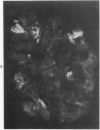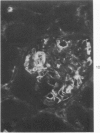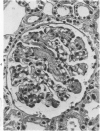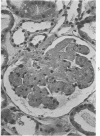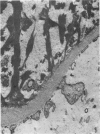Abstract
The histologic changes in human cadaveric kidneys preserved by either simple hypothermia or continuous pulsatile perfusion were studied by light and electron microscopy and by immunofluorescence in biopsies obtained immediately before (15 kidneys) and approximately 1 hour after (41 kidneys) transplantation. The changes observed in pretransplantation biopsies were largely similar in kidneys preserved by either method with the exception that foreign material was found in the vasculature of perfused kidneys only. Endothelial edema was more frequent and more severe in nonperfused kidneys only. Endothelial edema was more frequent and more severe in nonperfused kidneys. In the 1 hour posttransplantation biopsies, a lesion resembling intravascular coagulation (IVC) was noted in 18 of the 25 perfused kidneys but was absent from all 16 nonperfused kidneys. Transplants with severe IVC lesions failed to function and had extensive cortical necrosis when removed by the end of the first month. In follow-up biopsies, milder lesions appeared to heal fast and were compatible with transplant function. The IVC lesion is probably due to endothelial cell damage during perfusion of the kidneys.
Full text
PDF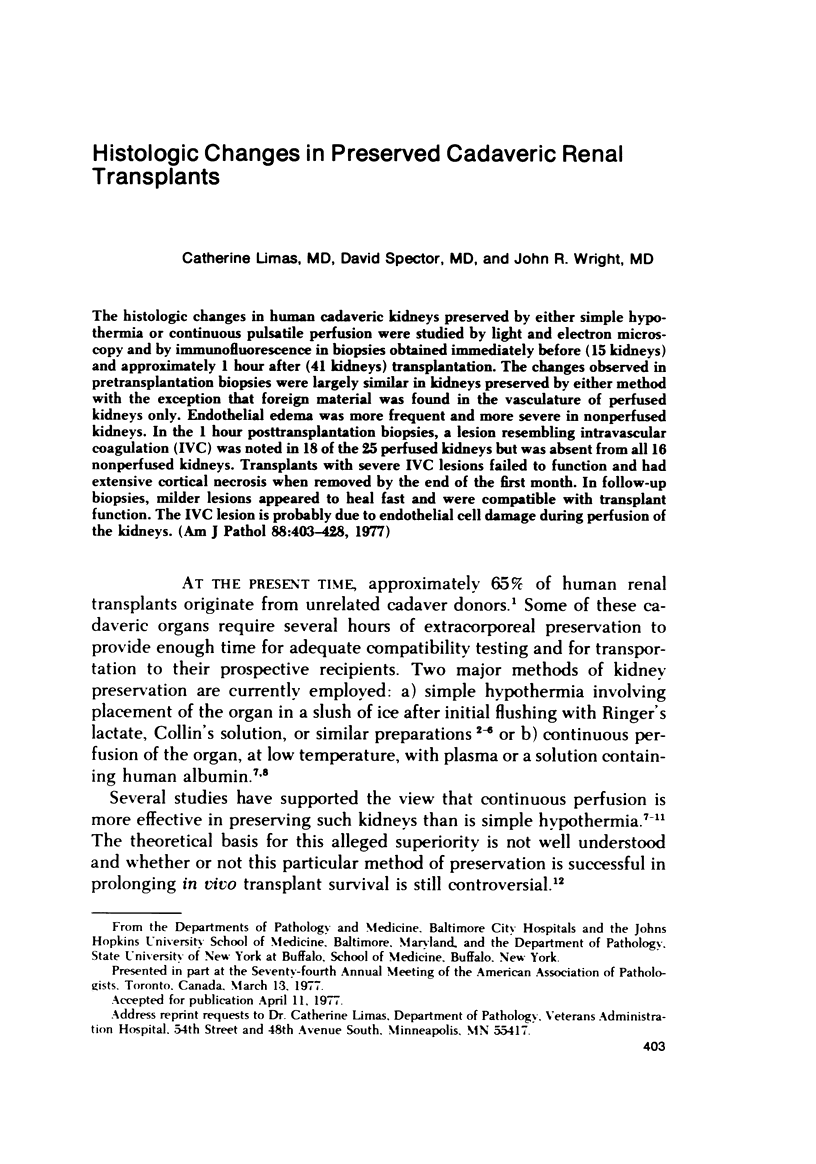
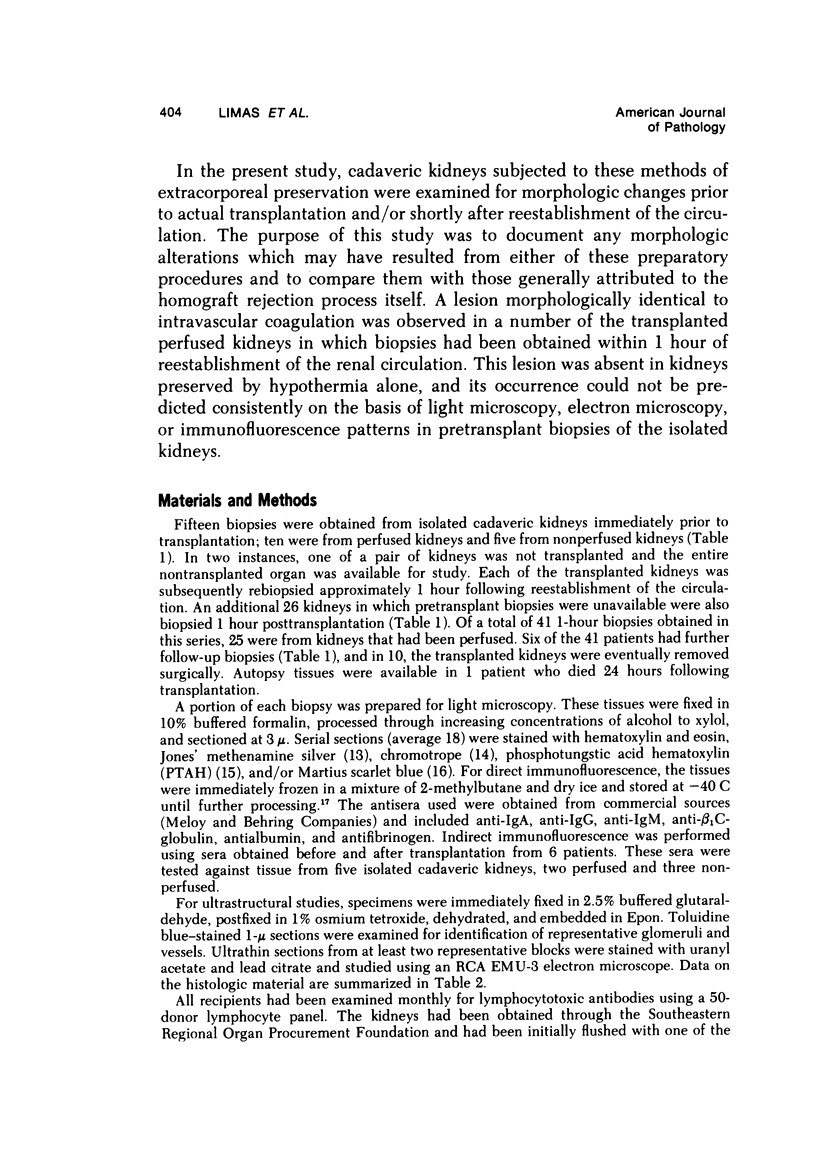
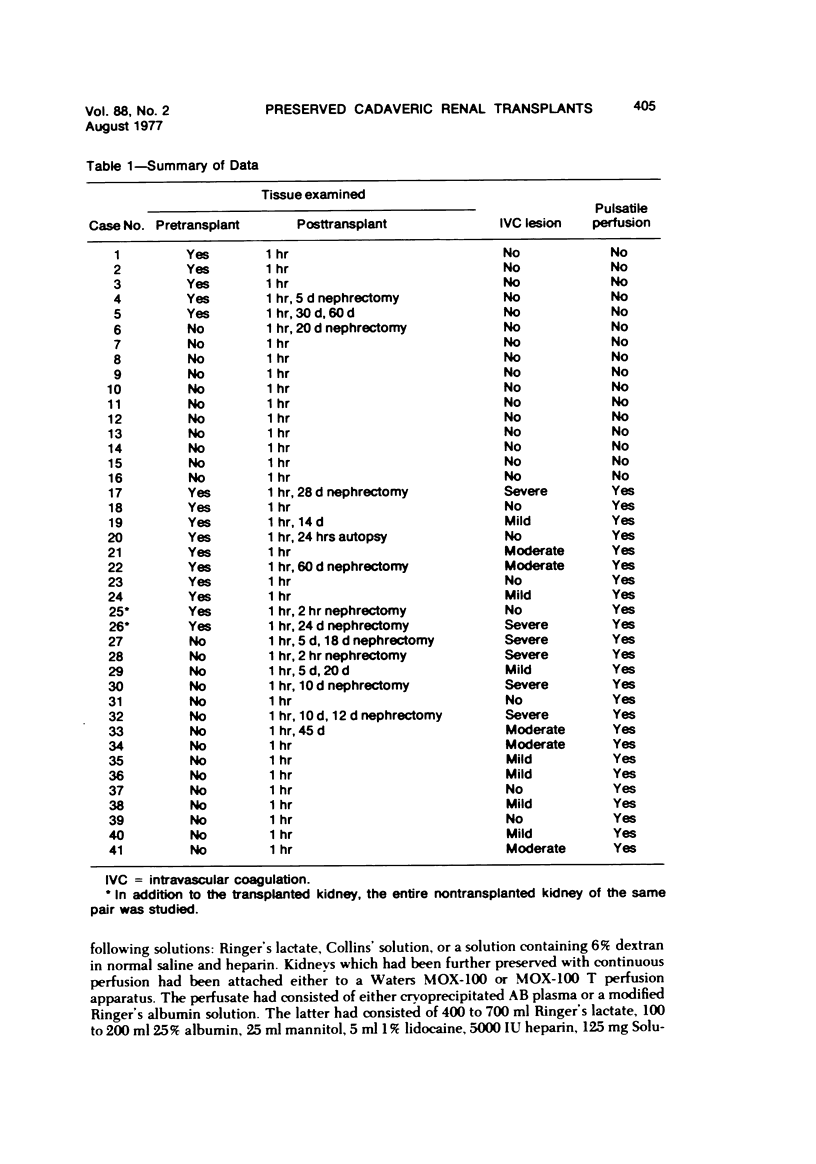
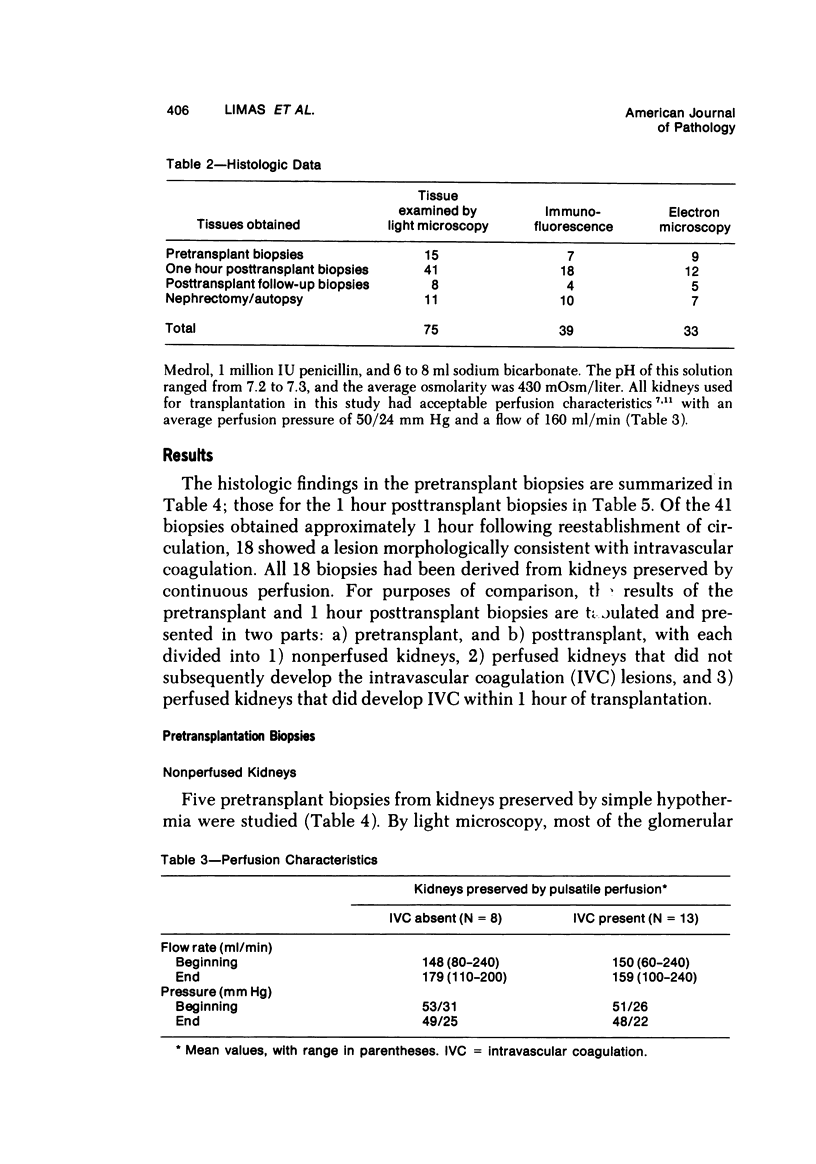
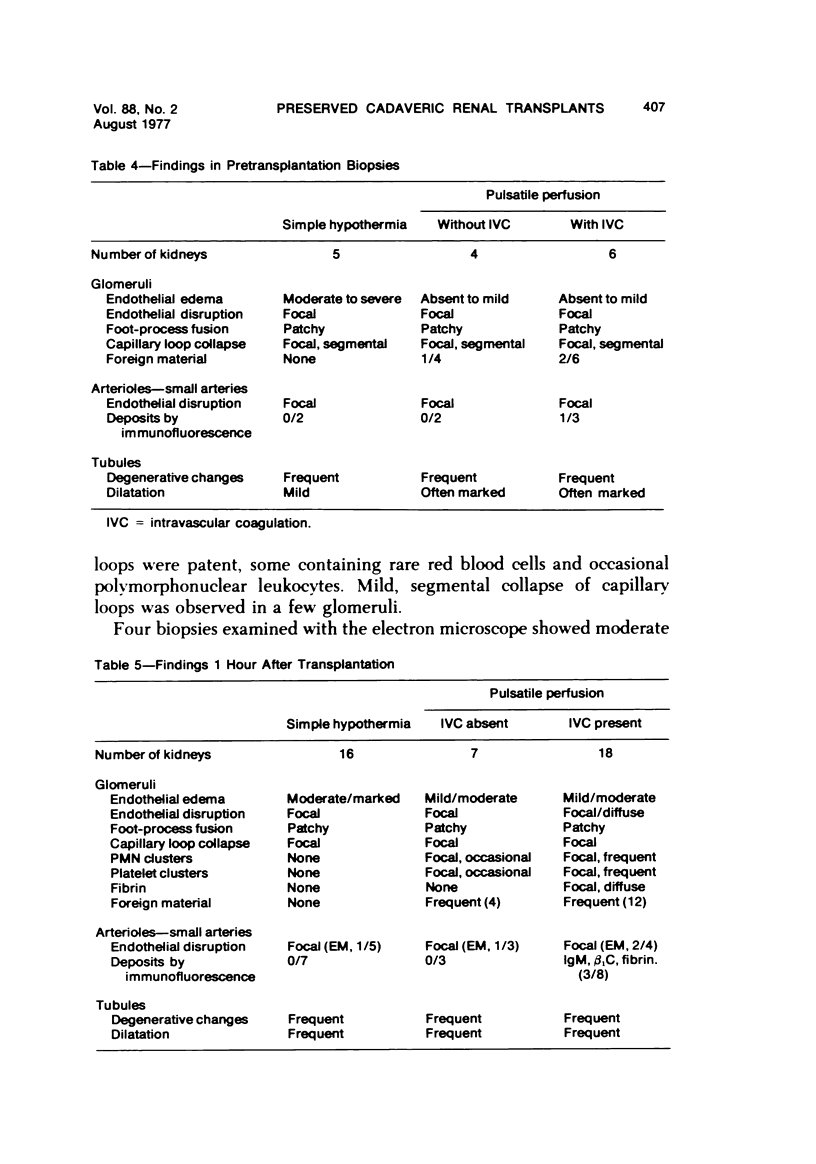
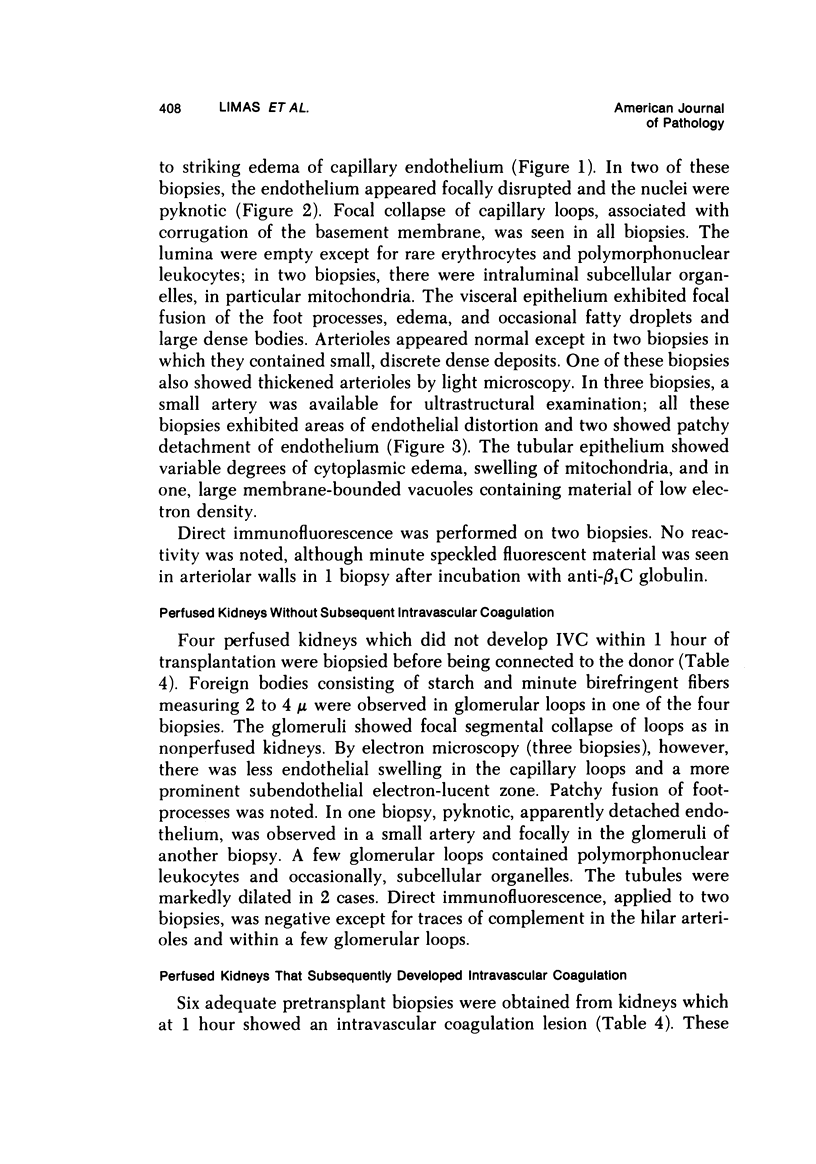
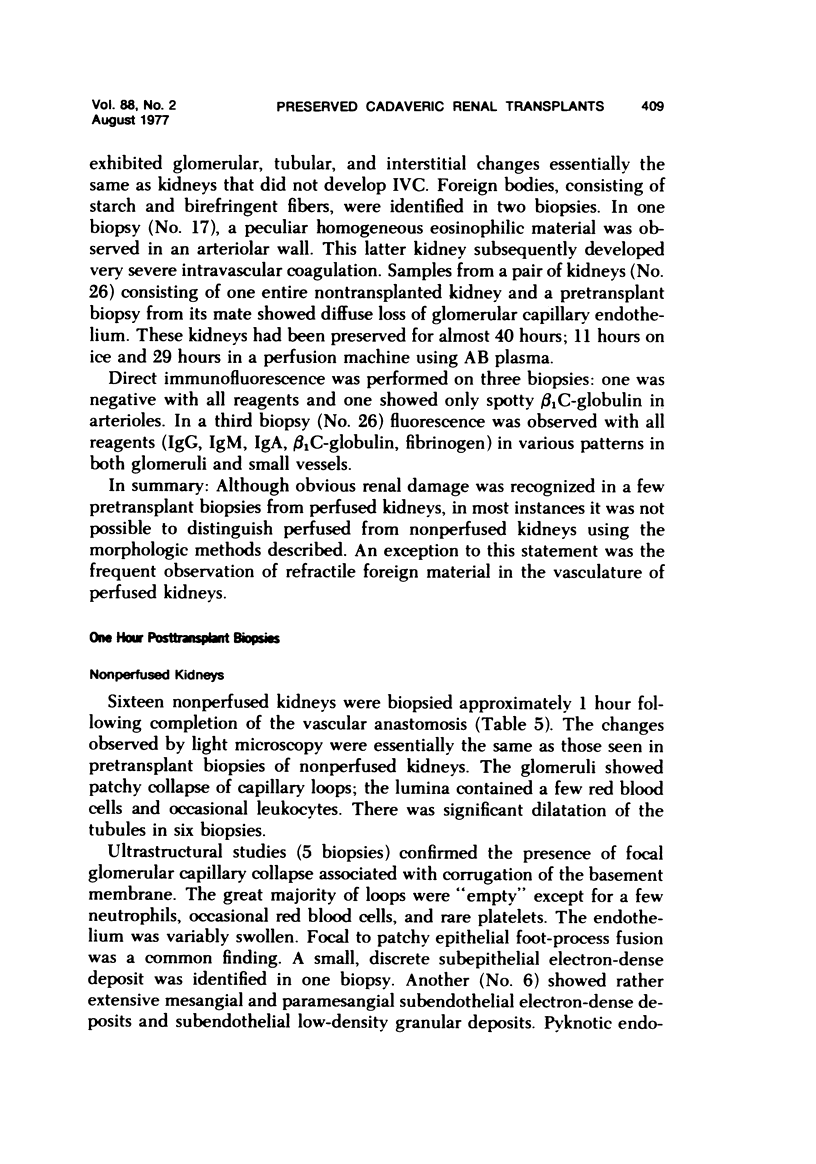
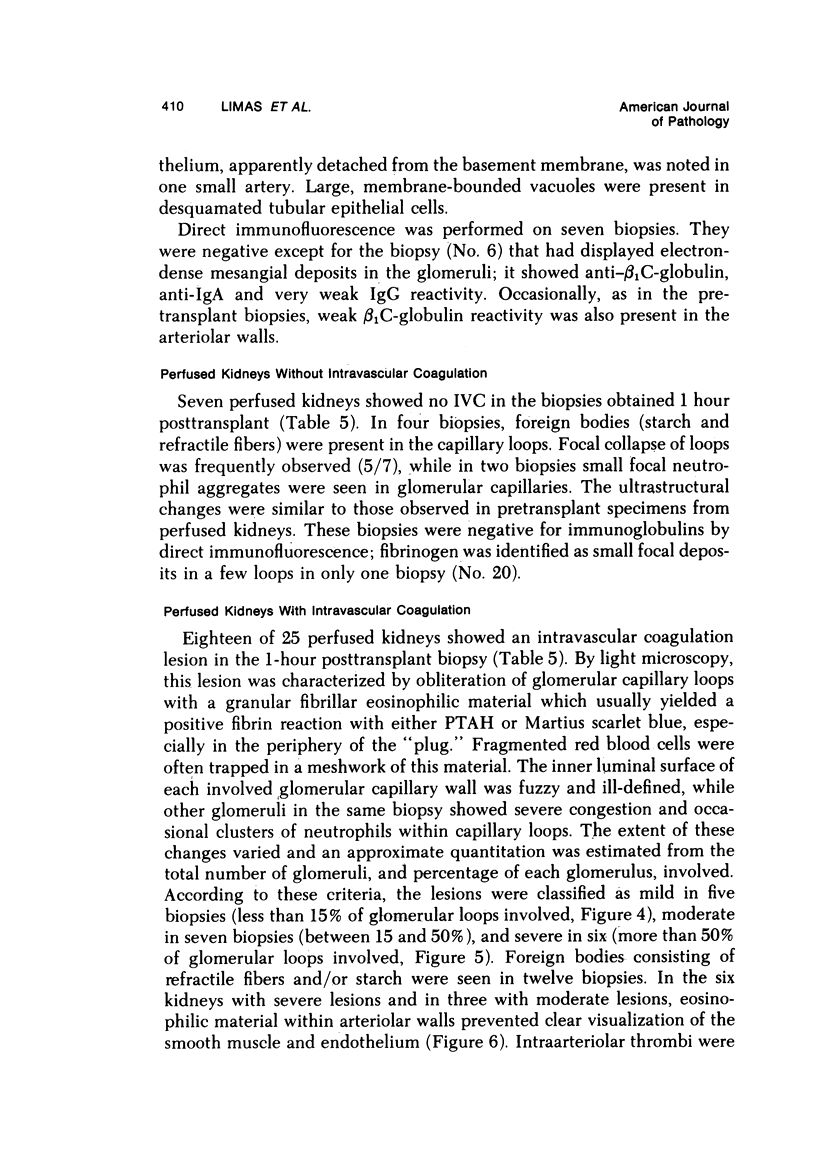
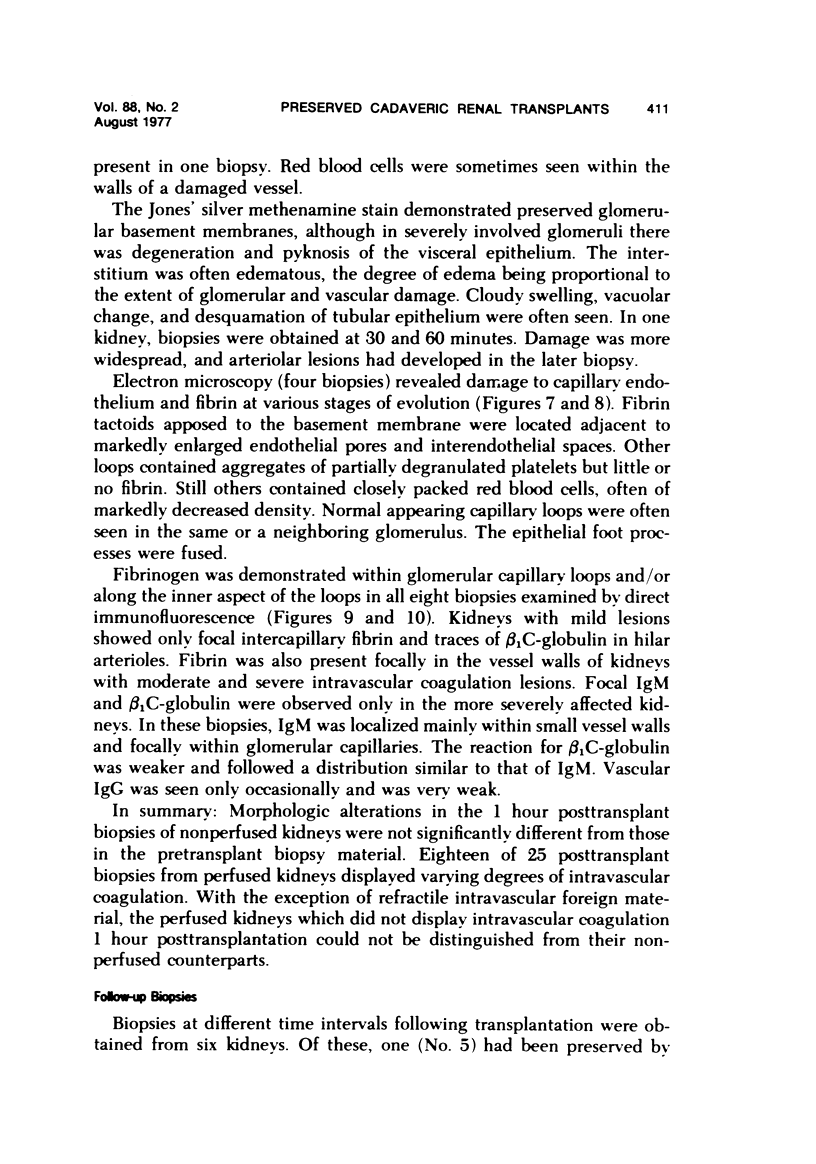
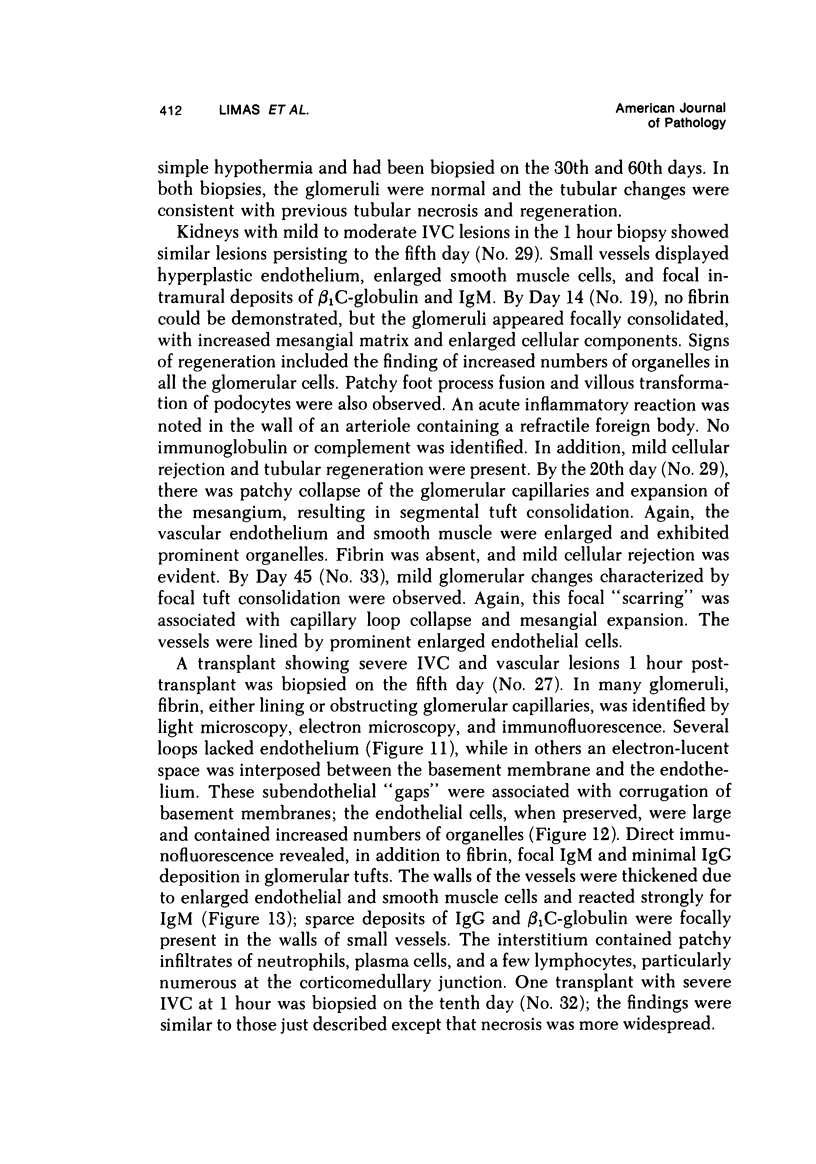



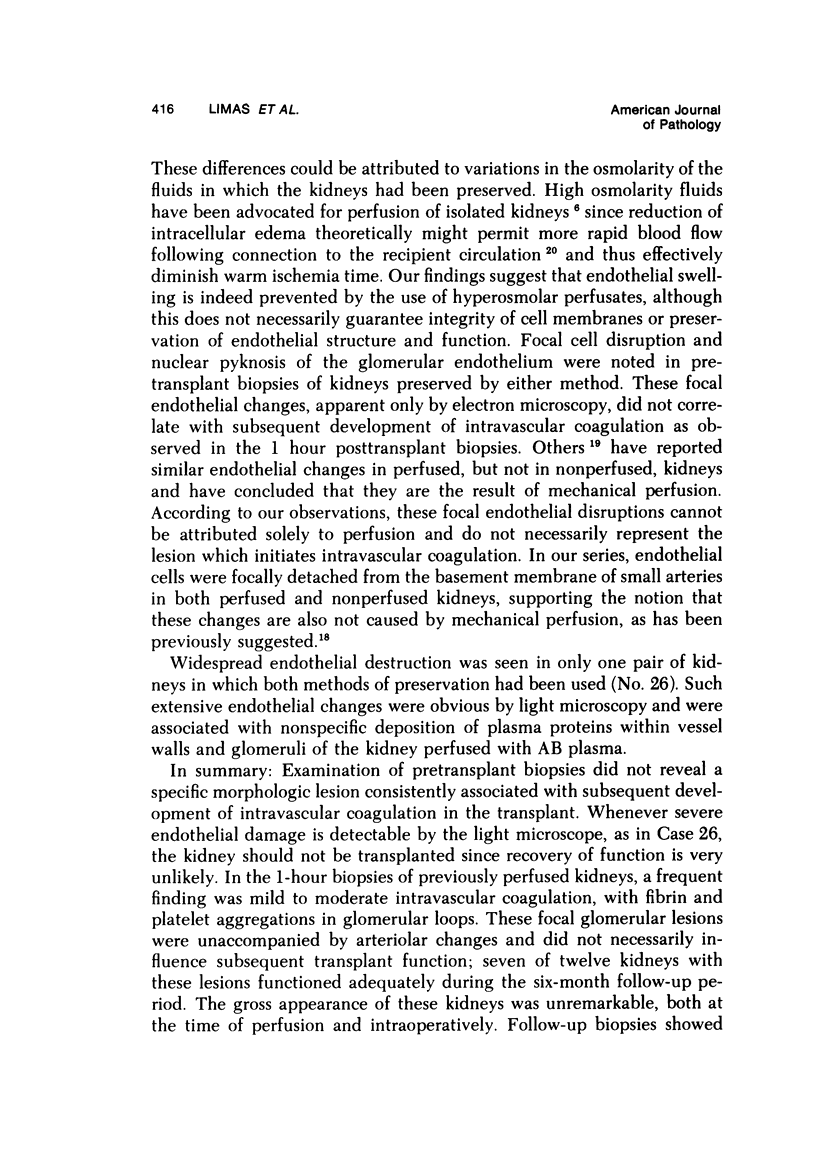




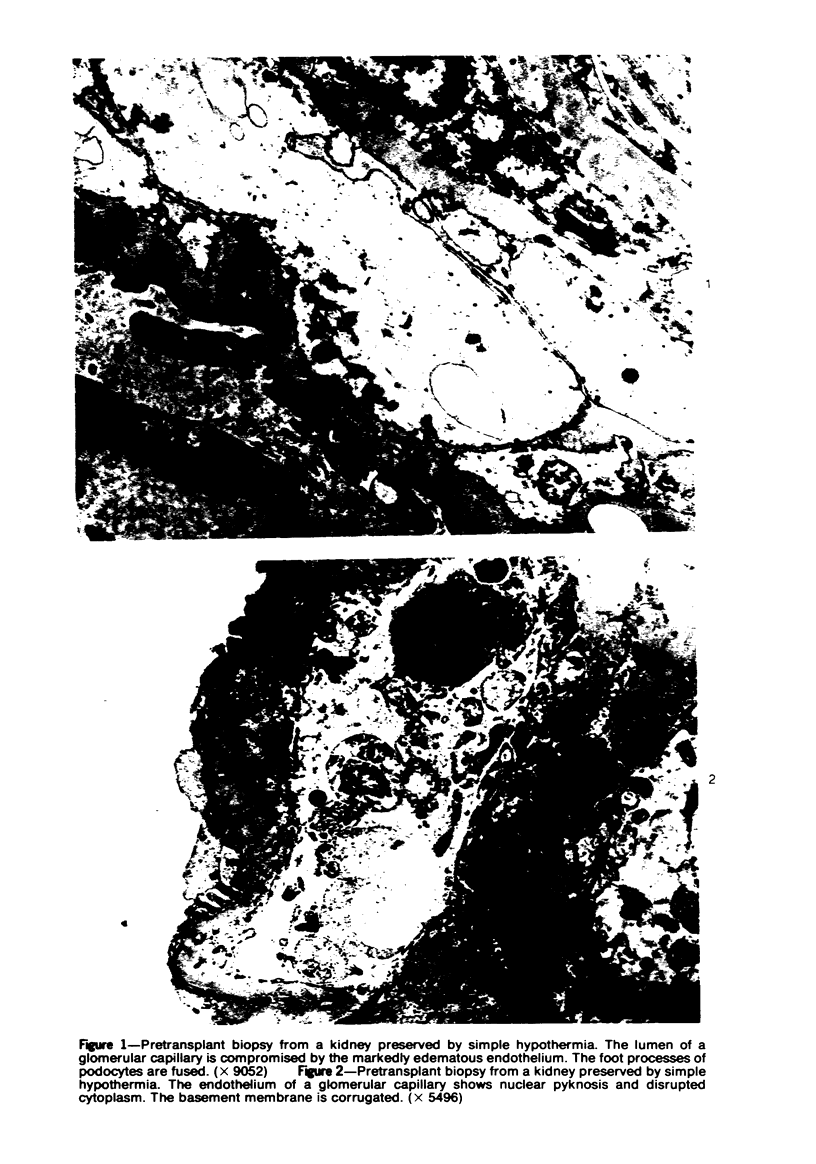
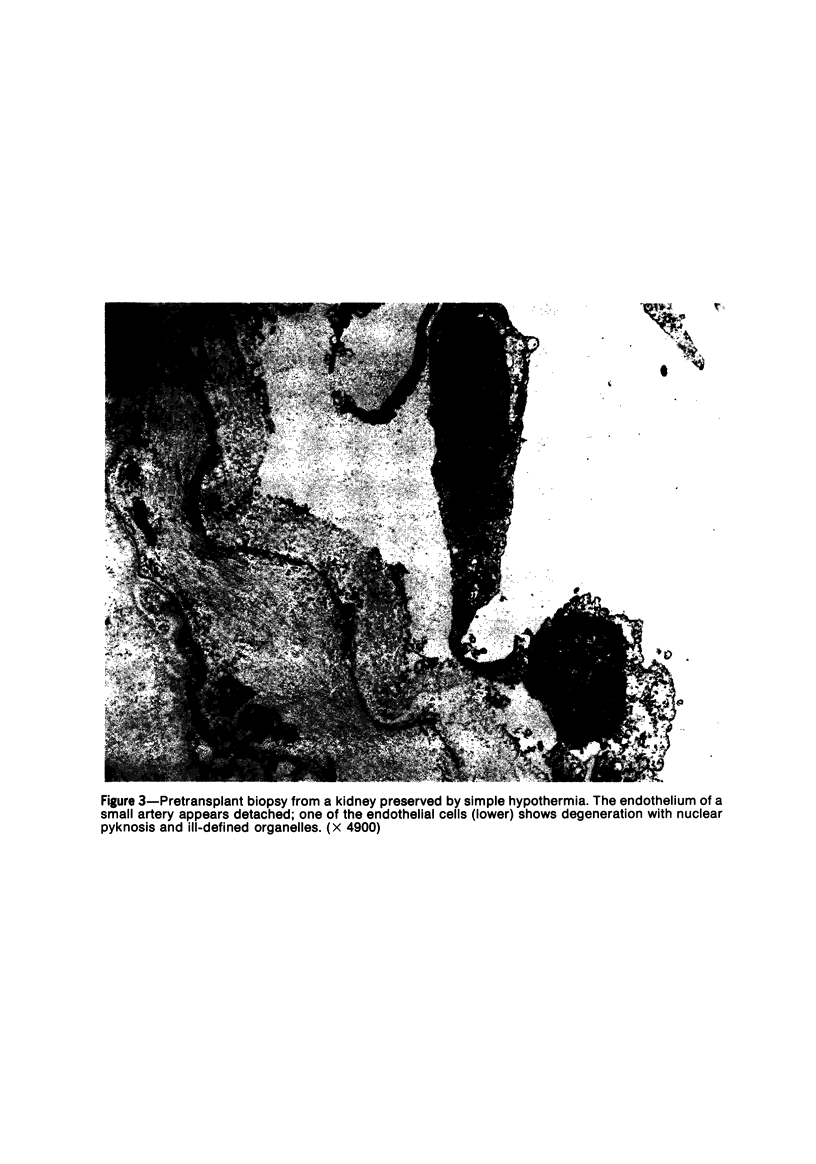
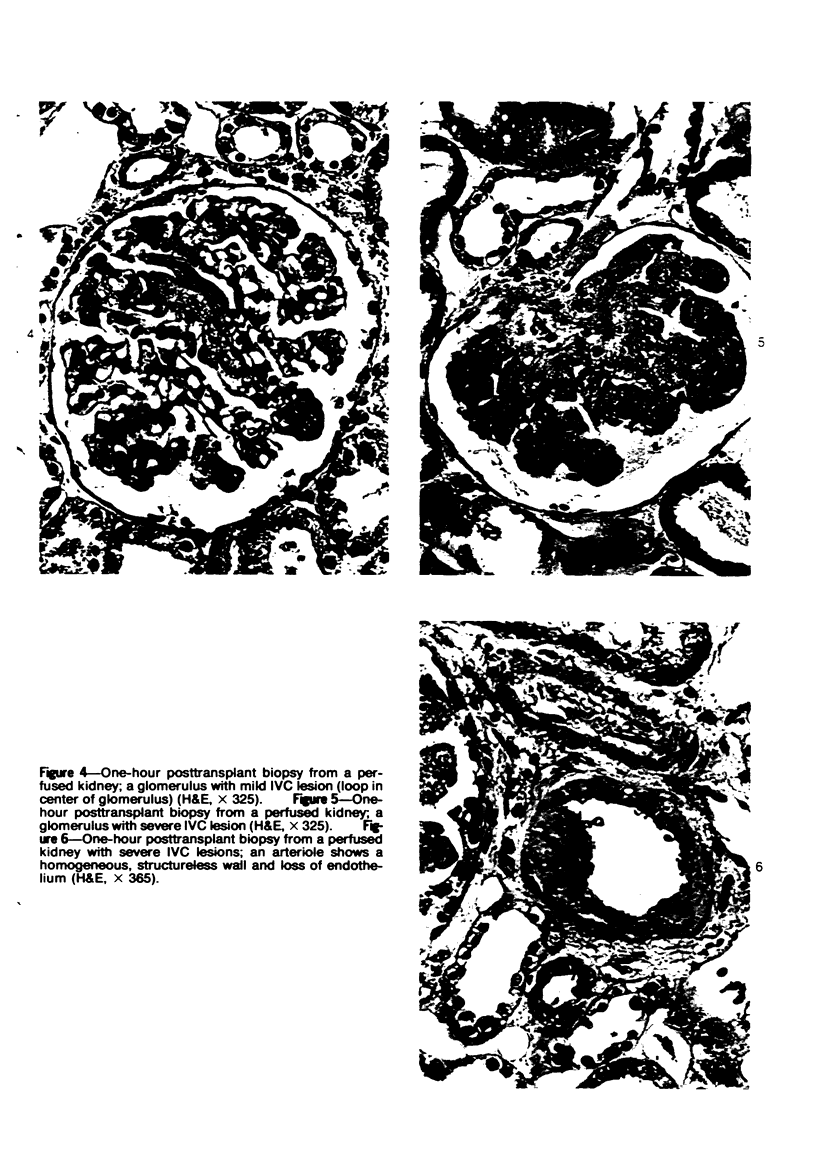
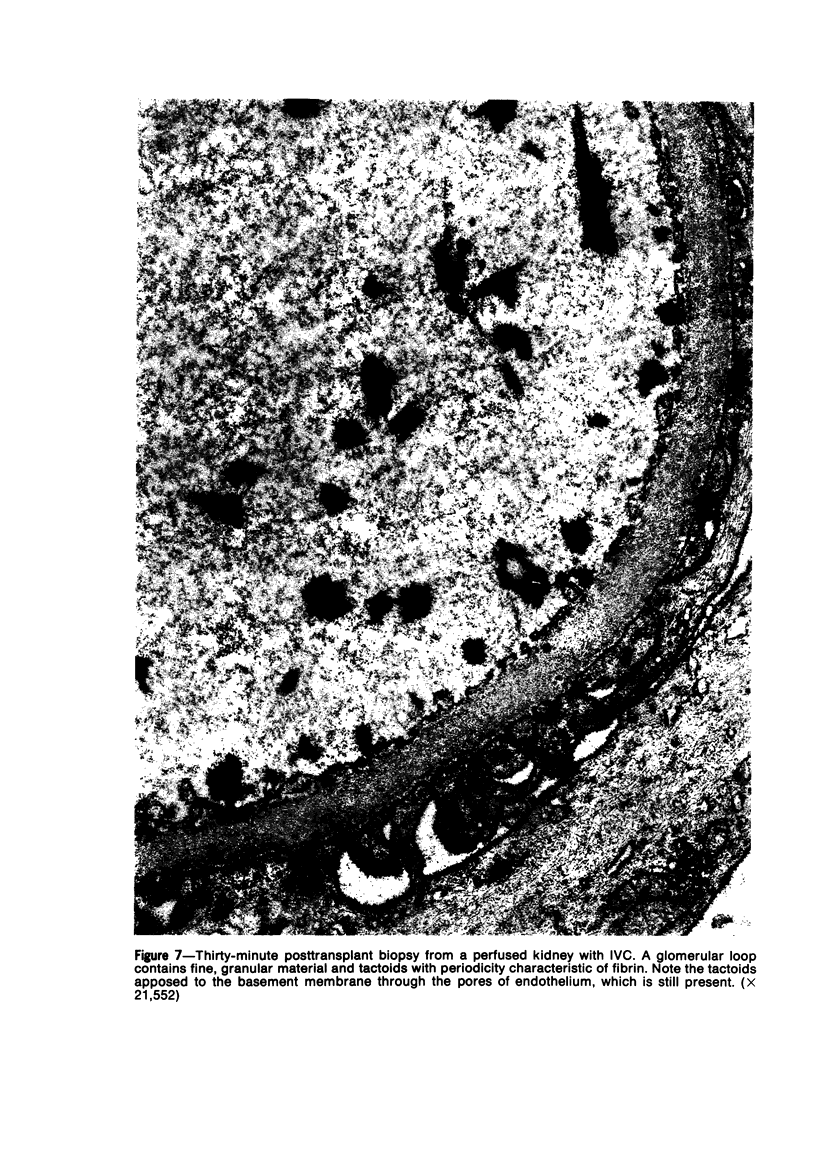

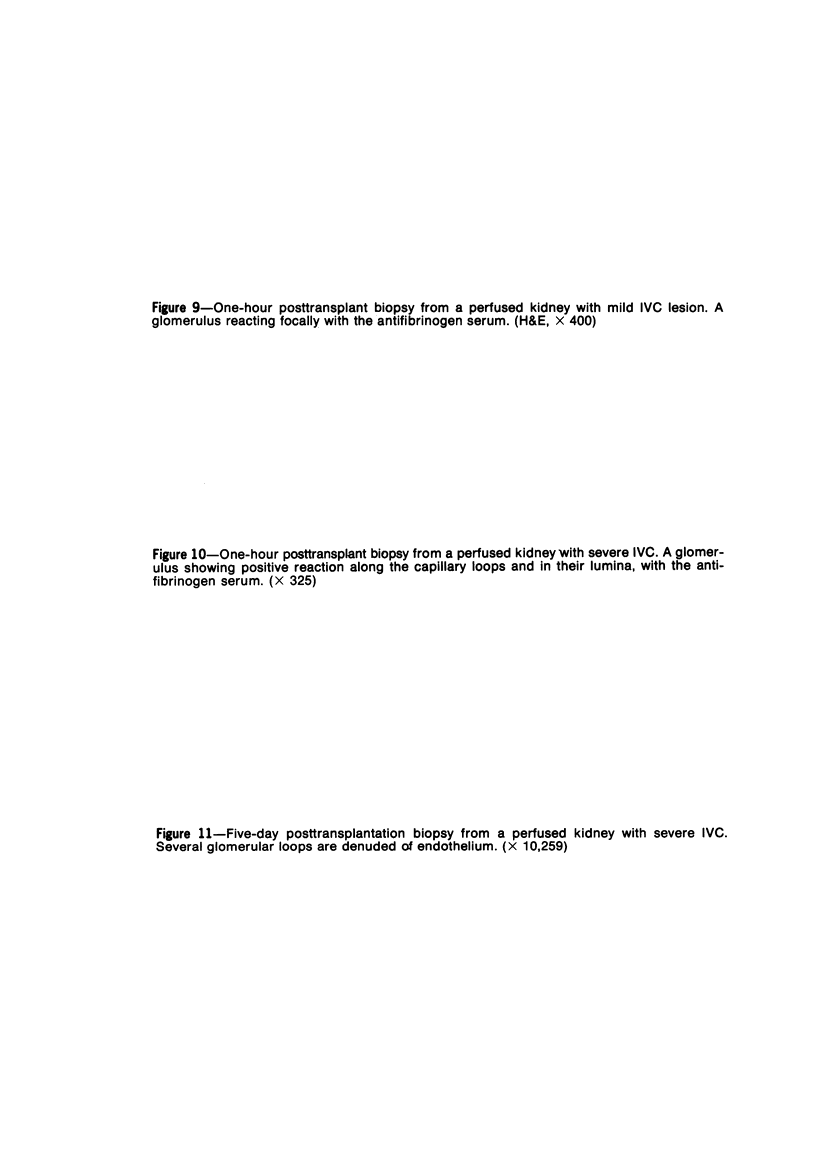


Images in this article
Selected References
These references are in PubMed. This may not be the complete list of references from this article.
- Acquatella H., Pérez-González M., Morales J. M., Whittembury G. Ionic and histological changes in the kidney after perfusion and storage for transplantation: use of high Na- versus high K-containing solutions. Transplantation. 1972 Oct;14(4):480–489. doi: 10.1097/00007890-197210000-00013. [DOI] [PubMed] [Google Scholar]
- Anderson N., Wyllie R., Williams G. M. Structural and metabolic changes in "preserved" renal allografts. Surg Forum. 1973;24:332–334. [PubMed] [Google Scholar]
- Belzer F. O., Kountz S. L. Preservation and transplantation of human cadaver kidneys: a two-year experience. Ann Surg. 1970 Sep;172(3):394–404. doi: 10.1097/00000658-197009000-00009. [DOI] [PMC free article] [PubMed] [Google Scholar]
- Clark E. A., Opelz G., Mickey M. R., Terasaki P. I. Evaluation of Belzer and Collins kidney-preservation methods. Lancet. 1973 Feb 17;1(7799):361–364. doi: 10.1016/s0140-6736(73)90142-6. [DOI] [PubMed] [Google Scholar]
- Collins G. M., Bravo-Shugarman M., Terasaki P. I., Braf Z., Sheil A. G., Williams G. Kidney preservation for transportation. IV. Eight-thousand-mile international air transport. Aust N Z J Surg. 1970 Nov;40(2):195–197. doi: 10.1111/j.1445-2197.1970.tb04058.x. [DOI] [PubMed] [Google Scholar]
- Collins G. M., Bravo-Shugarman M., Terasaki P. I. Kidney preservation for transportation. Initial perfusion and 30 hours' ice storage. Lancet. 1969 Dec 6;2(7632):1219–1222. doi: 10.1016/s0140-6736(69)90753-3. [DOI] [PubMed] [Google Scholar]
- Ehrenreich T., Espinosa T. Chromotrope silver methenamine stain of glomerular lesions. Am J Clin Pathol. 1971 Oct;56(4):448–451. doi: 10.1093/ajcp/56.4.448. [DOI] [PubMed] [Google Scholar]
- Filo R. S., Dickson L. G., Suba E. A., Sell K. W. Immunologic injury induced by ex vivo perfusion of canine renal autografts. Surgery. 1974 Jul;76(1):88–100. [PubMed] [Google Scholar]
- Hill G. S., Light J. A., Perloff L. J. Perfusion-related injury in renal transplantation. Surgery. 1976 Apr;79(4):440–447. [PubMed] [Google Scholar]
- Kissmeyer-Nielsen F., Olsen S., Petersen V. P., Fjeldborg O. Hyperacute rejection of kidney allografts, associated with pre-existing humoral antibodies against donor cells. Lancet. 1966 Sep 24;2(7465):662–665. doi: 10.1016/s0140-6736(66)92829-7. [DOI] [PubMed] [Google Scholar]
- Light J. A., Annable C., Perloff L. J., Sulkin M. D., Hill G. S., Etheredge E. E., Spees E. K., Jr Immune injury from organ preservation. A potential cause of hyperacute rejection in human cadaver kidney transplantation. Transplantation. 1975 Jun;19(6):511–516. [PubMed] [Google Scholar]
- Miller H. C., Alexander J. W., Smith E. J. Evaluation of kidney-preservation methods. Lancet. 1973 Apr 21;1(7808):880–881. doi: 10.1016/s0140-6736(73)91443-8. [DOI] [PubMed] [Google Scholar]
- Moore T. C., English T. S., Berne T. V. Machine preservation of 302 human cadaveric kidneys for transplantation. Surg Gynecol Obstet. 1974 Feb;138(2):239–243. [PubMed] [Google Scholar]
- Starzl T. E., Lerner R. A., Dixon F. J., Groth C. G., Brettschneider L., Terasaki P. I. Shwartzman reaction after human renal homotransplantation. N Engl J Med. 1968 Mar 21;278(12):642–648. doi: 10.1056/NEJM196803212781202. [DOI] [PMC free article] [PubMed] [Google Scholar]
- Stephenson T. P., O'Donoghue E. P., Hendry W. F., Wickham J. E. Preservation of human kidneys for transplantation: preliminary results with a Gambro perfusion machine. Br Med J. 1973 Feb 17;1(5850):379–381. doi: 10.1136/bmj.1.5850.379. [DOI] [PMC free article] [PubMed] [Google Scholar]
- Summers W. K., Jamison R. L. The no reflow phenomenon in renal ischemia. Lab Invest. 1971 Dec;25(6):635–643. [PubMed] [Google Scholar]
- Williams G. M., Hume D. M., Hudson R. P., Jr, Morris P. J., Kano K., Milgrom F. "Hyperacute" renal-homograft rejection in man. N Engl J Med. 1968 Sep 19;279(12):611–618. doi: 10.1056/NEJM196809192791201. [DOI] [PubMed] [Google Scholar]



